If you imagine that Venice has become all about cruise ships, crowds, and tourist traps, you’ve never seen the real Venice I know. It is the Venice behind the spectacle. I can take you there, on a 7-day, 6-night culinary-sailing tour with no more than ten guests. Together with Venetian native Mauro Stoppa, long-time friend and owner of the Eolo, a restored historic fishing boat, I’ll show you Venice in a respectful way—the unfrequented islands, the natural life on the silent lagoon, the nooks and crannies of native dwellers. And along the way, you’ll feast on the bounty of the lagoon, its fish and seafood, its seasonal vegetables, its wine. Here’s a diary of our last 7-day, 6-night May cruise. It’ll give you a taste (literally and figuratively) of what our Venice-by-Boat is all about—and oh, we still have a few spots left for our next sail. We’re about to shove off again for our September 16-22 sail, so if you’re foot loose and fancy free and would like to join us, contact us right away! Itinerary and price details, and information about next year’s dates (we sail in the spring and fall), continue here.
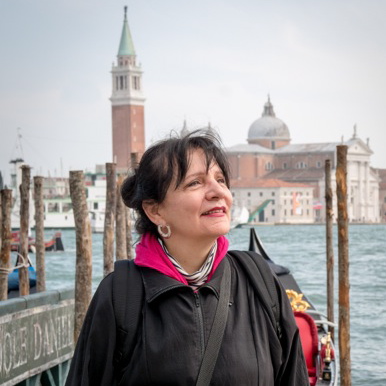
Arriving in Venice in May, a few days early, excited to meet our guests.

Meeting up with our host, Mauro Stoppa in Mazzorbo, our first stop.
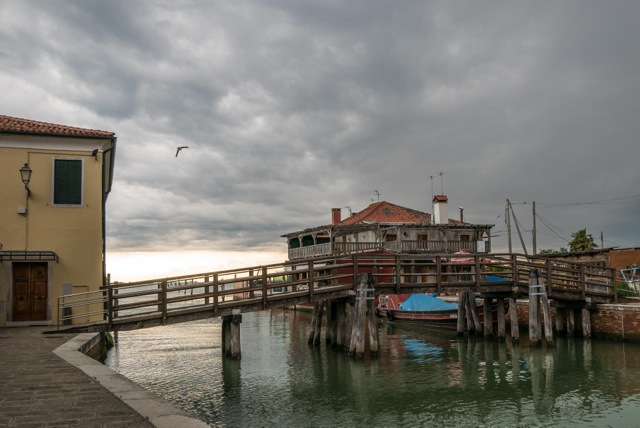
Crossing over onto the adjoining island of Burano. There are technically 180 islands in the lagoon, but if you figure the ones in that are joined like this, there are only 130.
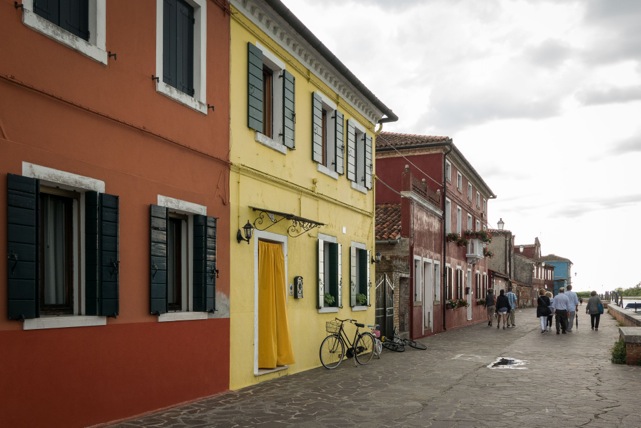
A stroll with our native guide.

Umbrellas out, but it’s only a misty rain.

Crossing over a Burano canal to the other side of the street..

Burano’s buildings were painted in vivid colors to enable returning fishermen to see their houses from a distance. This one, an artist’s house, is illustrated to show water levels from flooding over the years.
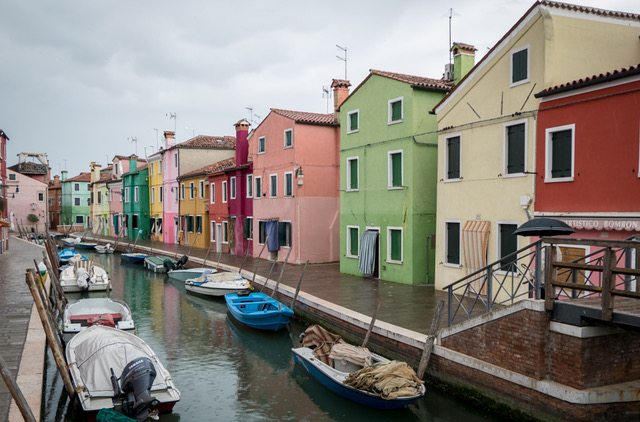
The boats along the canals are tied up like domestic animals.
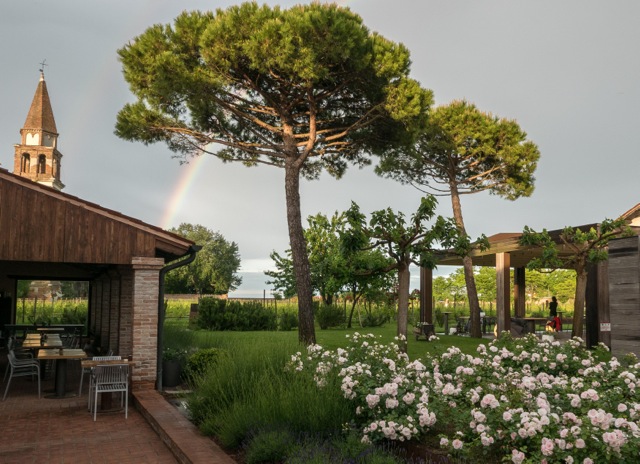
Back at our inn, the Venissa, a converted monastery on the Mazzorbo canal, for dinner and overnight. The sun came out, and a rainbow.

Our digs at the Venissa.
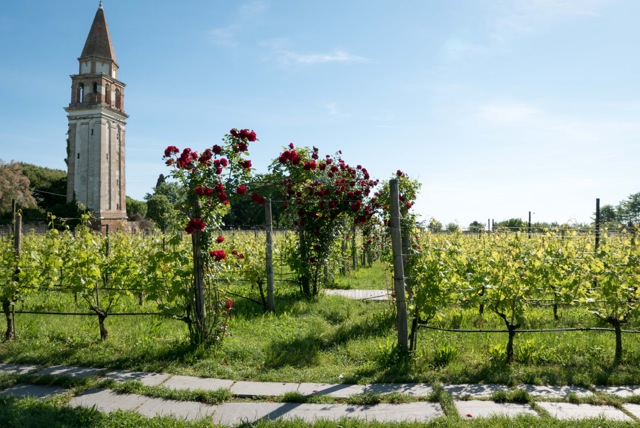
The view from our breakfast table, the Venissa vineyard.
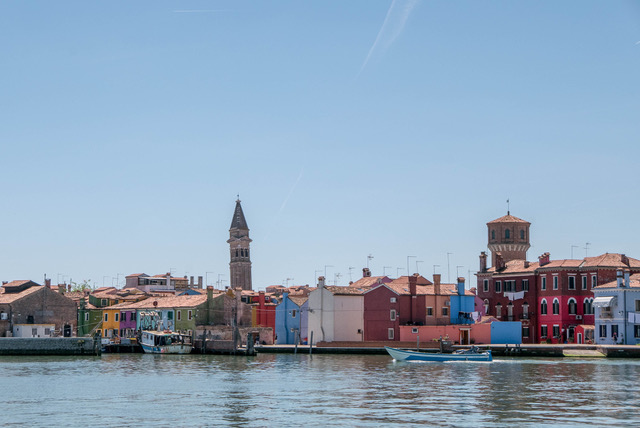
Leaving Burano. . .

. . . and studying the chart with our guide.
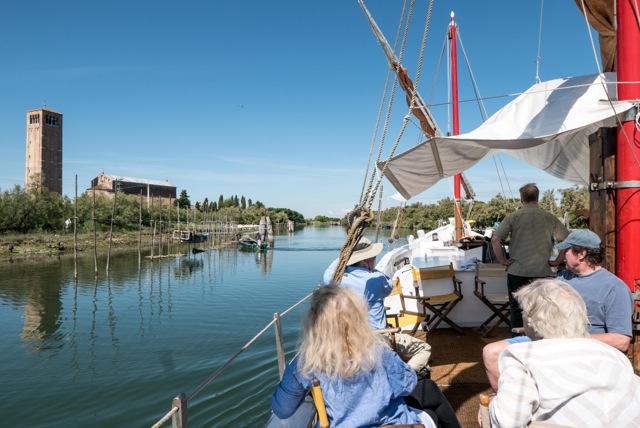
Heading for Torcello this morning.

Along the way, a wave and a “buon giorno!” to a local fisherman checking his crab traps. Cathedral of Santa Maria Assunta in the background.

Church of Santa Fosca, 11th century, in the piazzetta adjacent to the original cathedral.
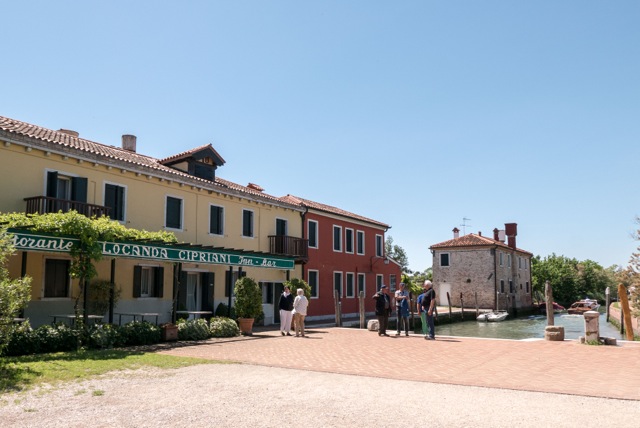
Locanda Cipriani, on Torcello. Hemingway famously hunted here—and decimated the entire duck population.
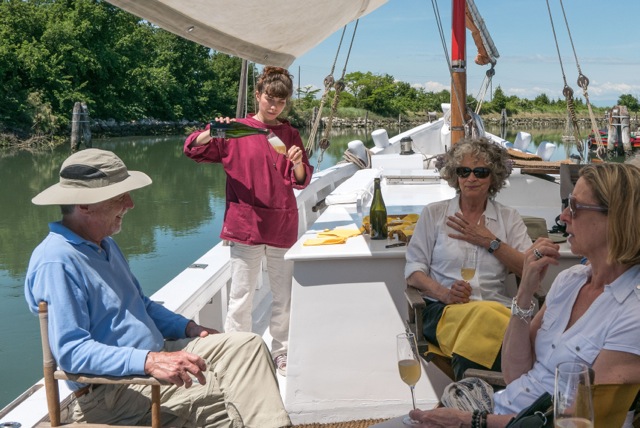
Beatrice pours a little Prosecco aperitif before lunch. . .
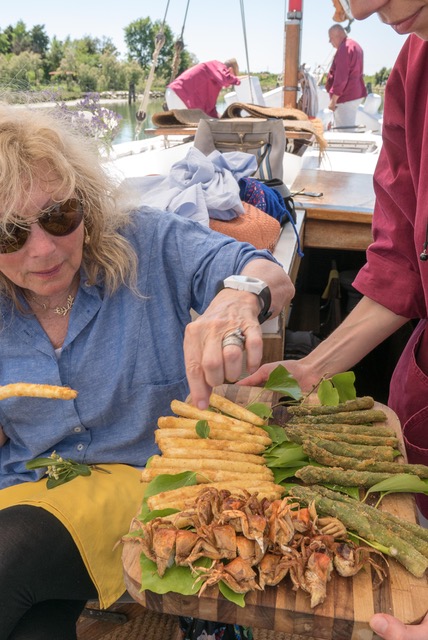
Back on board and a little snack from the galley—the local white and wild asparagus, and tasty crab morsels.
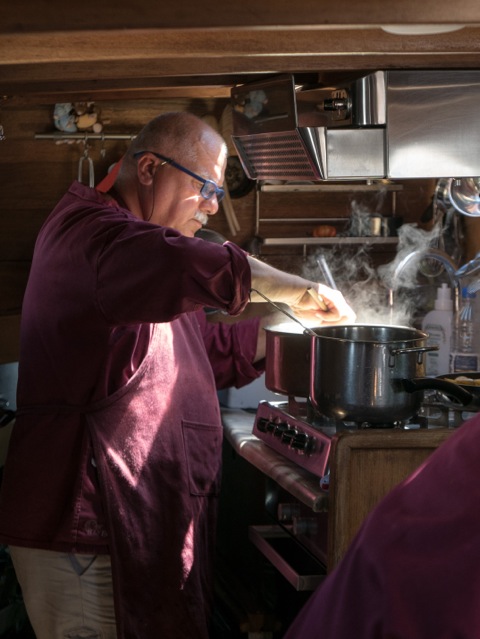
In the meantime, it’s the season for fresh peas and Mauro is making lunch, “rice e bisi,” rice with peas, Venice’s anticipated spring dish. . .

. . . while Chef Marta and Beatrice work on the mantis shrimp course.

A toast to the Eolo.

Mauro’s “risi e bisi.”
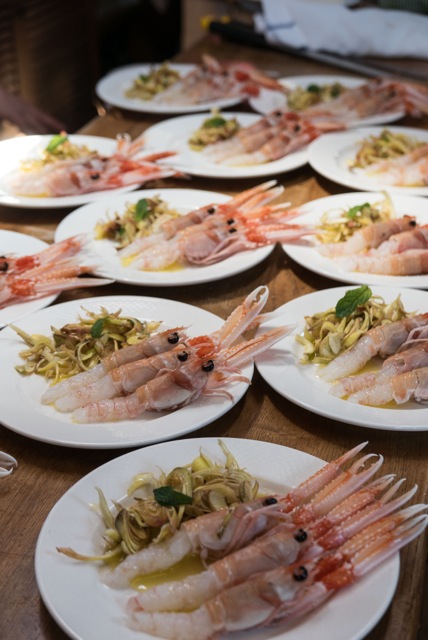
Next course, canocchie, mantis shrimp, and fresh lagoon artichokes.
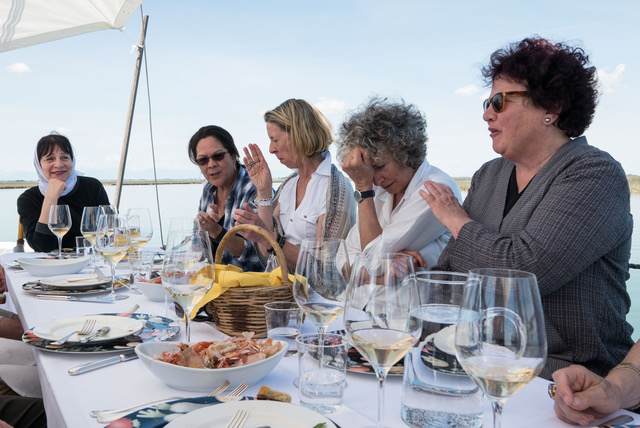
Plates empty. . . .

Our host explains our course and next destination.
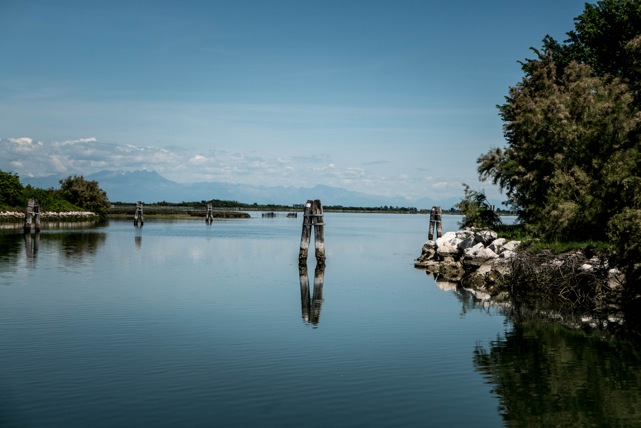
Back under sail in the silent lagoon, the Dolomites way in the distance.

We arrive in Cavallino, at the Locanda delle Porte 1632, the old customs house, converted to a lovely inn and fine restaurant.


Locanda delle Porte 1632, it doesn’t get any more charming than this.
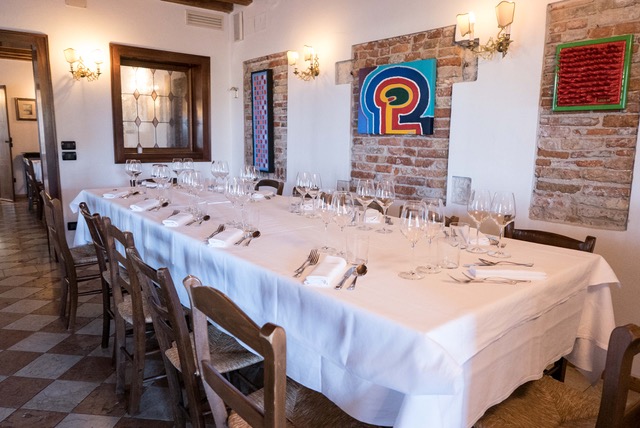
Our table set for dinner at the Locanda delle Porte 1632.

The next day, we’re off and with a little wind, Mauro decides the sail goes up.

Our skipper, Davide does the unfurling—he’s agile, like a squirrel!
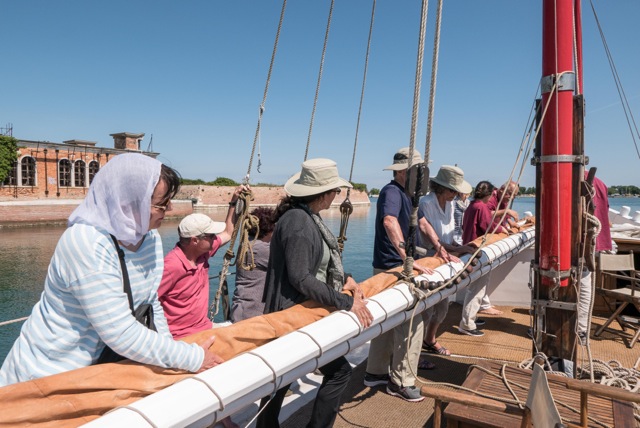
After it comes down, it’s team effort.

Back in the galley, Chef Marta’s making spigola, bass caught only a few hours before, cooked in salt.

Guests can help, if they like.

Fresh Adriatic anchovies for appetizers. . .
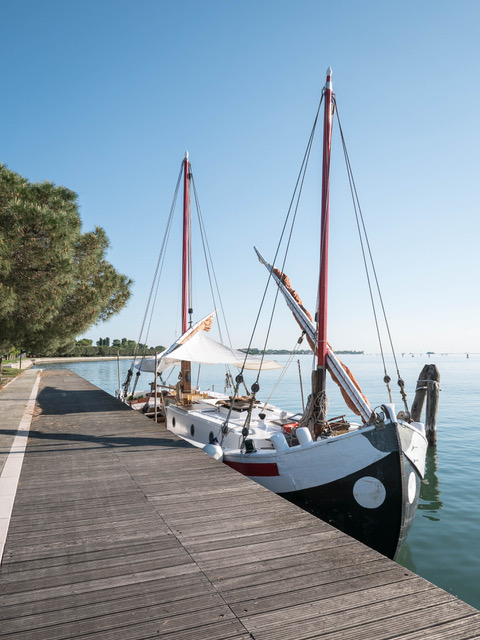
The Eolo at Mallamocco on the Lido, our next stop.
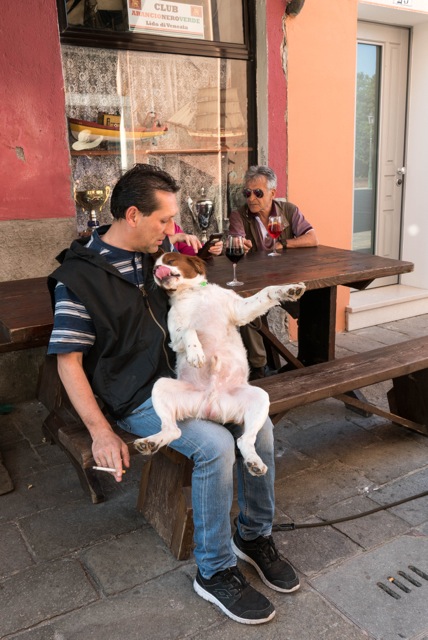
They sure like their dogs here!
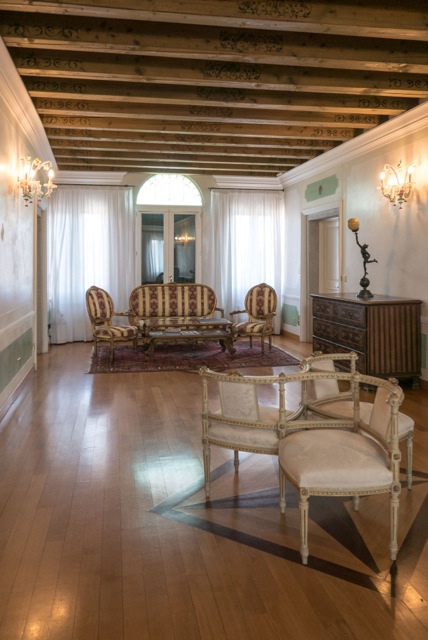
A sitting room at our beautiful hotel, Ca’ del Borgo, Mallamocco.

Our guest, looking happy with his digs on the second floor.

The following morning and motoring past one of the islands used to quarantine cargo and passengers for 40 days before anyone was allowed into port in the days of the plague.
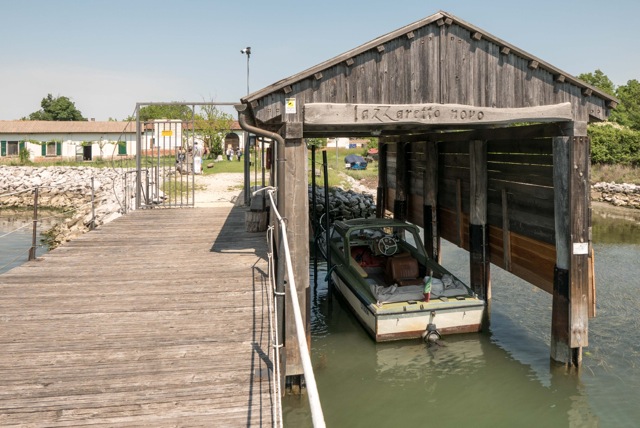
We disembark at Lazaretto Nuovo, the main quarantine island in the 16th century.
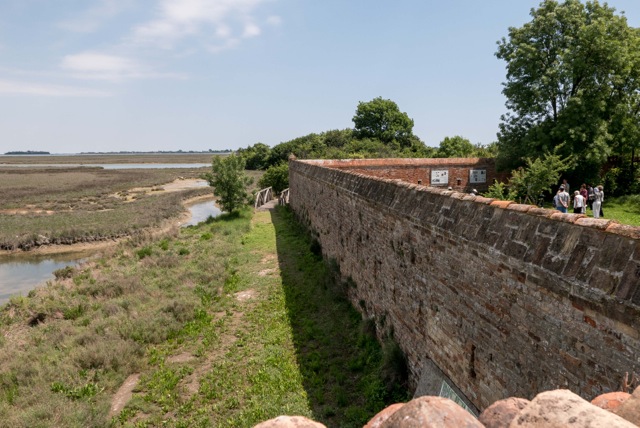
Exploring this corner of Lost Venice on the roof at Lazaretto Nuovo.
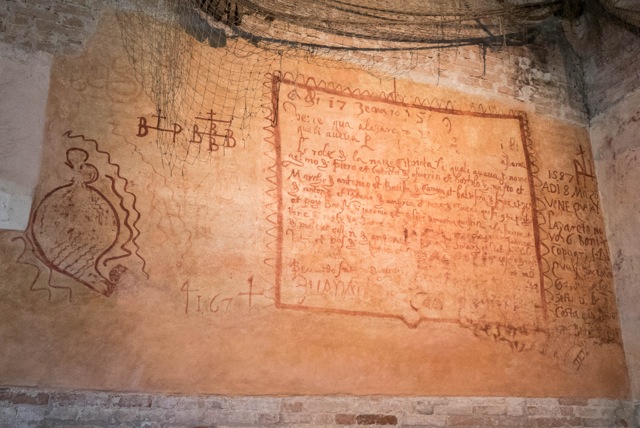
And inside, where a third of the population of died from the plague in the 1500s. The writing on the wall tells of their ordeal.
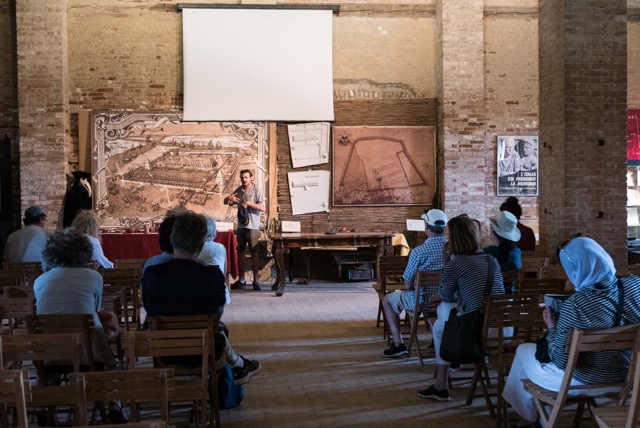
Our local guide on the island, an archeologist working on the site.

The habit of the “medico della peste,” the doctor of the plague. The face was covered with cloths and sponges soaked in vinegar underneath it, which they believed helped protect them from protracting the dreaded disease. The doctor was paid well for his services, but typically had a survival rate not much higher than the people confined there.
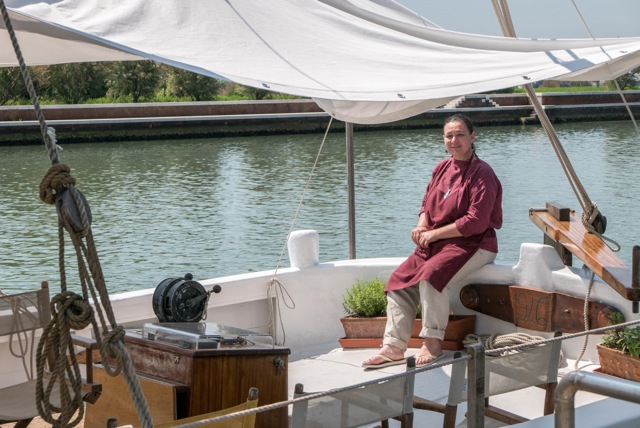
Chef Marta welcoming us back to the boat for lunch.
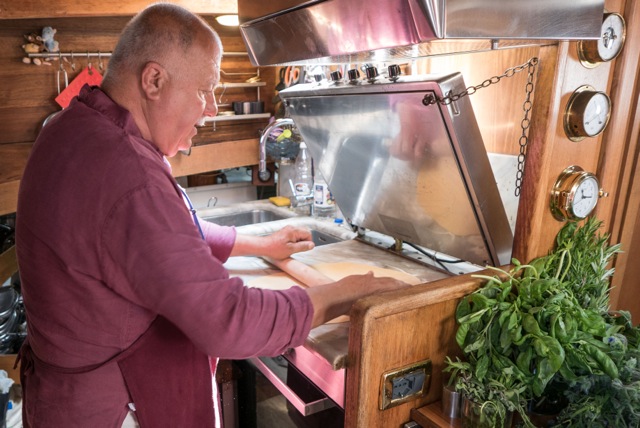
Mauro making fresh pasta for lasagne. . .
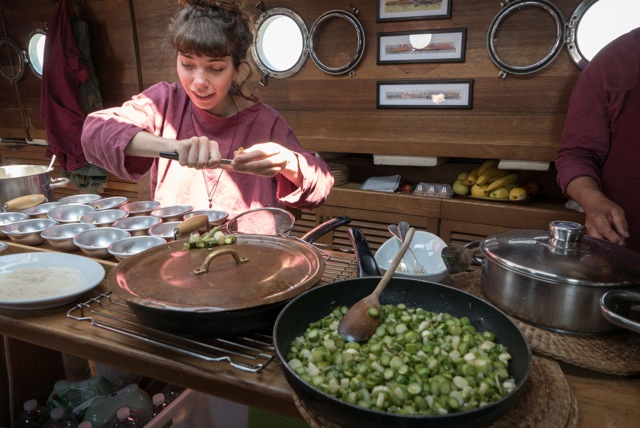
While the rest of the crew preps the asparagus.

Dropping anchor for our last gorgeous lunch on board.
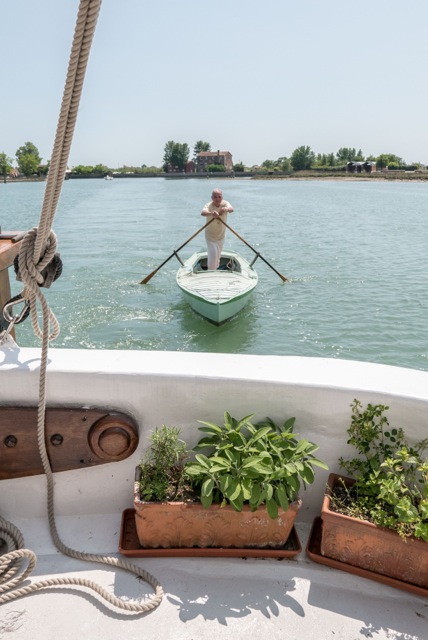
Look who’s coming for dinner. . . Luigi Divari, friend, fisherman and artist.
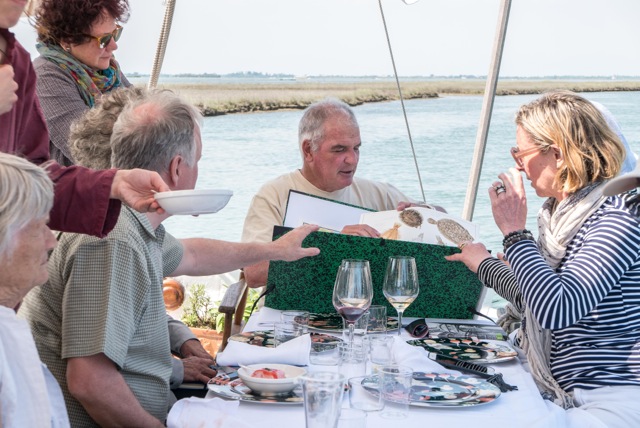
A well known Venetian artist, we asked him to bring his paintings with him—what gorgeous mementos of the lagoon to take home.
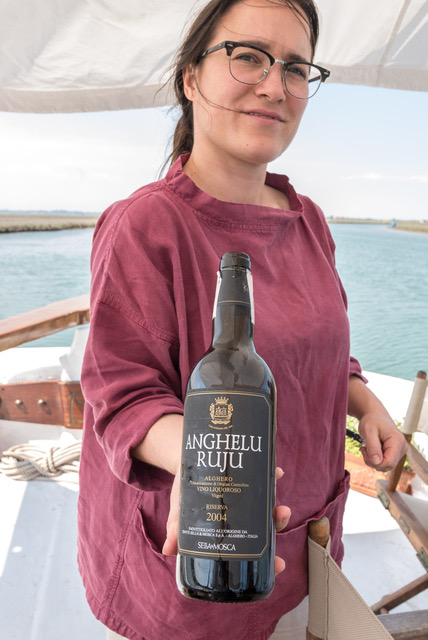
Diana showing us a gorgeous bottle of Sardinian wine Mauro selected to have with our dessert.

After lunch, on our fourth day, heading for Venice.
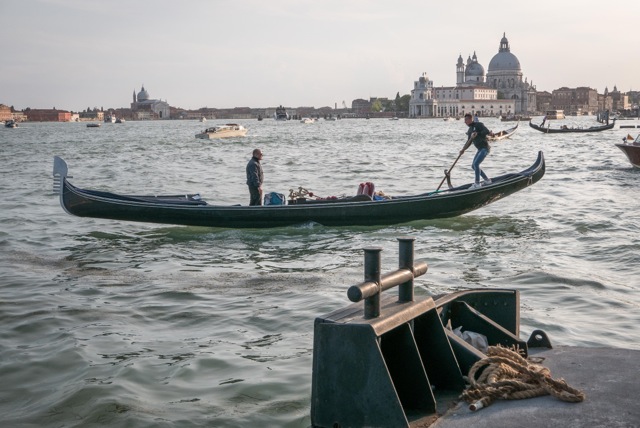
Gondoliers, the church of Santa Maria della Salute in the background.

Our hotel in Venice on the Grand Canal, the 16th century Palazetto Pisani, still in the same family’s hands.
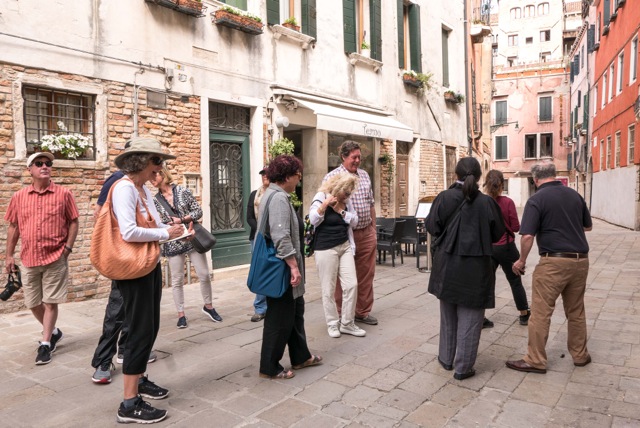
Walking the back streets of Venice with Laura, knowledgable local guide, friend and fellow sailor.

It’s the year of the Biennale. This was my favorite installation, a statement on global warming and the fragility of Venice.
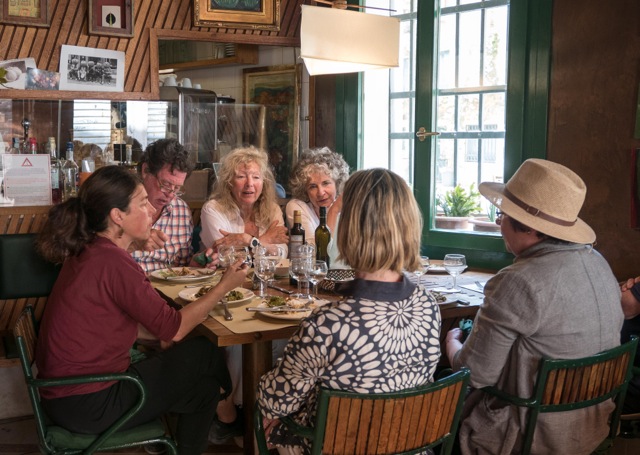
Some of us at lunch with Laura at one of my favorite Venetian restaurants, La Zucca.
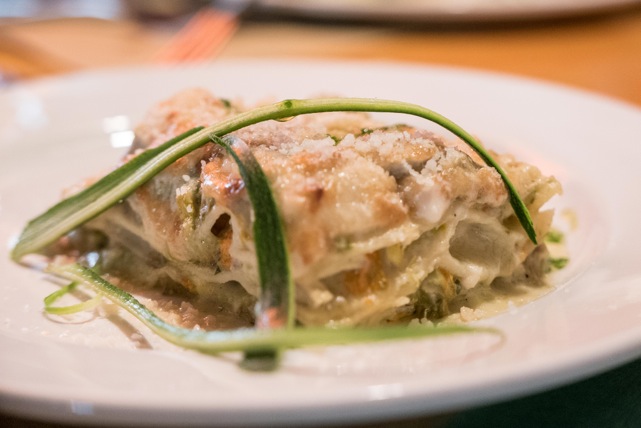
One of my favorite dishes at La Zucca, the vegetable lasagne.
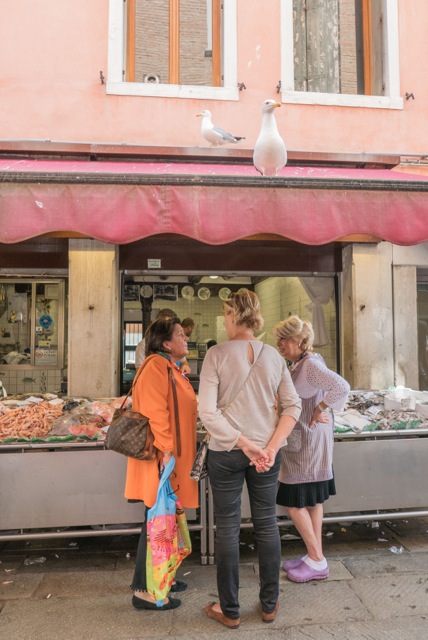
No visit to Venice would be complete without a stop at the famous ancient market in the Rialto (our feathered friends concur). . .
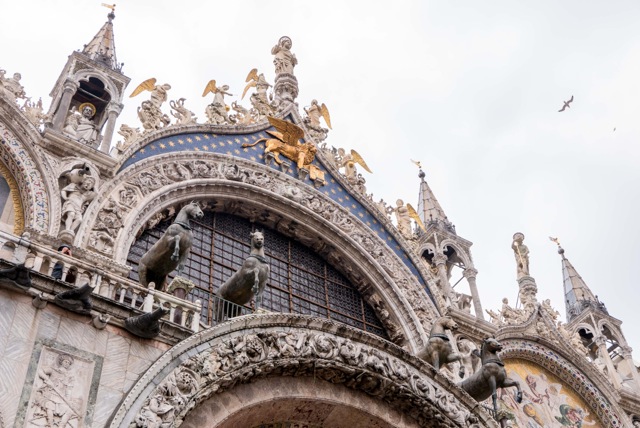
…and the famous sights. . . San Marco with its gilded bronze horses (stolen from Byzantium when Venice ruled the seas).
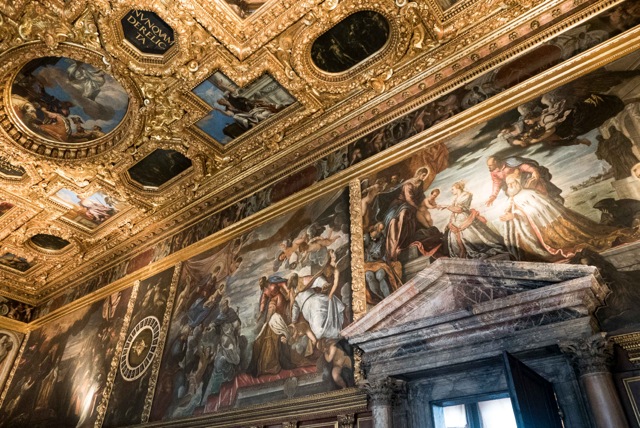
Inside the Palazzo Ducale (Ducal Palace).

And lesser known nooks and crannies—Bevilacqua Textiles. Established by Luigi Bevilacqua c. 1499, descendants of the original family continue the city’s ancient tradition of weaving velvets, brocades and damasks by hand.
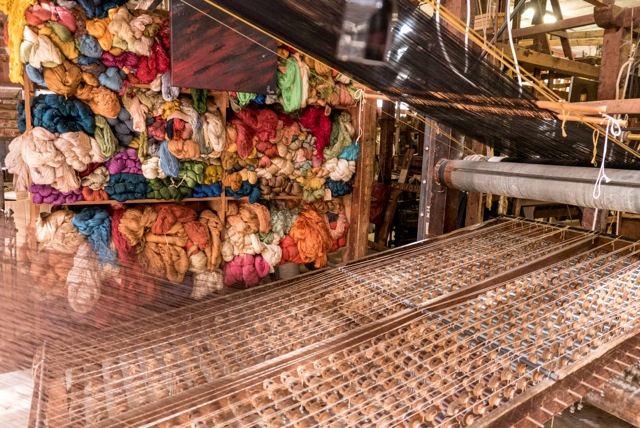
The fabrics are still made on the original looms in the workshop here.

The weavers choose this highly skilled craft straight after graduating school and learn as apprentices to the master weavers.
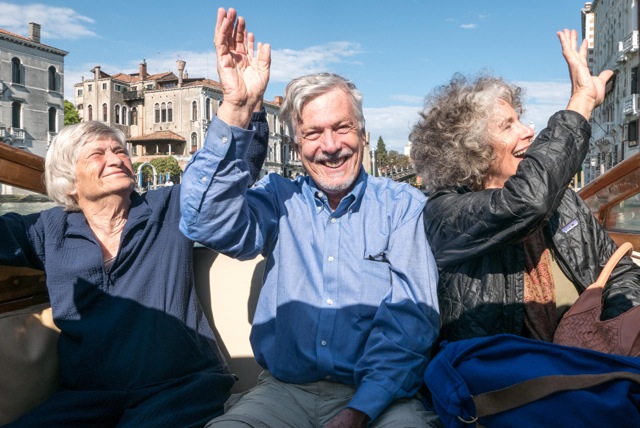
But it’s time to go after three days in Venice proper. Arrivederci, Venezia and lovely guests, a presto—see you again soon!

 Follow
Follow
 email
email